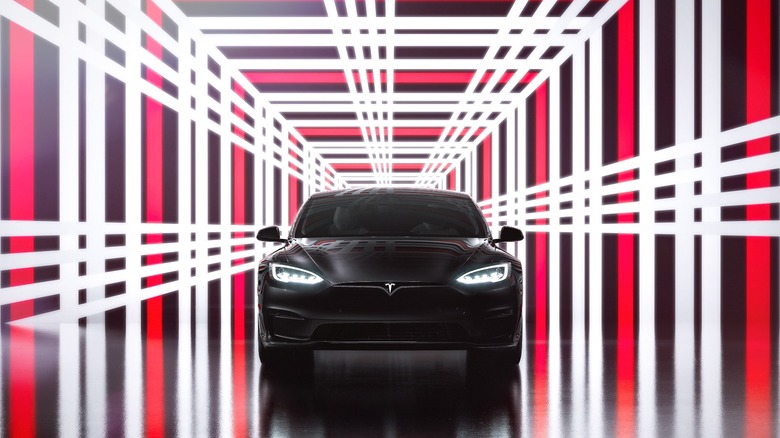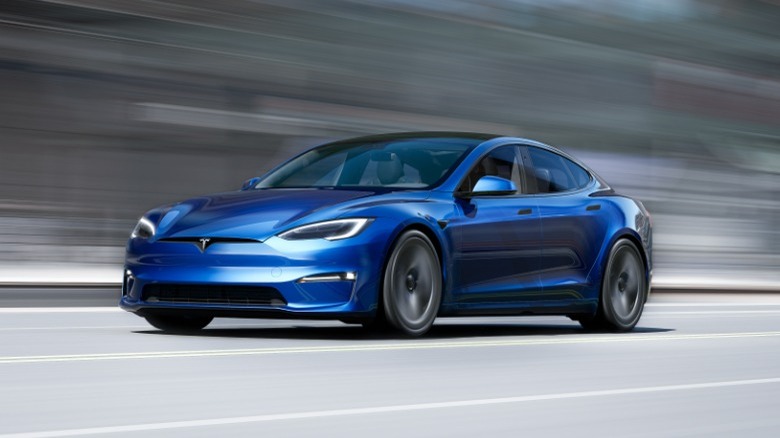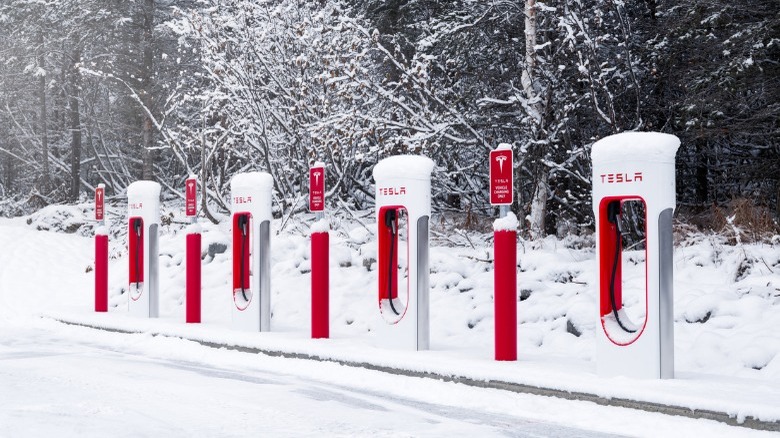Here's How Much Range The Tesla Model S Really Has
If you're shopping for electric vehicles, a Tesla is no doubt close to the top of your list of options. While there are now plenty of options available on the market, the list of viable, practical options narrows when you start looking at higher-cost vehicles. The Tesla Model S is arguably the company's most important since it launched the company into the limelight and set the standard for high-performance EVs going forward.
Even though electric vehicles are gaining in popularity, despite Tesla claiming the top spot as the best-selling luxury brand for 2022, range and practicality are still major concerns for potential buyers. According to The International Energy Agency, the average EV range in 2021 was 217 miles, as opposed to only 79 miles back in 2010. This represents an over 250% increase in a little over a decade of development, largely thanks to advancements in battery technology and improvements in aerodynamics and motor efficiency.
Impressive in normal conditions
According to its EPA estimate, the 2023 Tesla Model S can travel between 396 and 405 miles on a single charge, depending on whether you're talking about the Long Range Model S or the Plaid. Does that claim hold any water, though, and how does it compare to the competition? The EPA numbers are always estimates, and those estimates can vary depending on driving conditions, how aggressively you drive, and even the weather.
Starting with the Model S Plaid and its 396-mile range claim reveals that Tesla is overstating its vehicle's capability, but the vehicle still gets an impressive range number. Marques Brownlee, a YouTube tech reviewer, famously did a long-term review of his Tesla Model S Plaid after 30,000 miles, and he claims to reliably get around 360 miles out of his unit. Edmunds did a real-world test on a 2022 Model S Plaid and found it delivered an average of 345 miles off a full charge. Edmunds' particular model was fitted with 21-inch wheels, which reduces the EPA range down to 348 miles. Curiously, InsideEVs did real-world highway range tests with a Model S Plaid with 21-inch wheels and got a much lower figure of 300 miles. The difference here is rather stark, with the InsideEVs testing scoring 14% lower than the claimed range, while the Edmunds tests showed almost parity with the EPA numbers. This is probably mostly due to testing conditions, as Edmunds biases its testing towards city driving.
As for the Long Range Model S, a YouTuber named Bjørn Nyland did a long-range test on a Long Range Model S, and its 100 kWh battery managed to deliver a staggering 400 miles of range on one charge, which is only five miles less than Tesla's claim.
What's the deal with cold weather?
If you've been paying attention to EVs at all, you'll know that Li-Ion battery chemistry takes a massive hit to efficiency when temperatures get too low or too high. High temperatures generally aren't too much of a problem, thanks to the cooling systems in most EVs, but cold winters in many parts of the world mean EVs become far less practical for longer trips. As for Tesla, its vehicles all have battery heating technology to mitigate the effects of cold weather, but you can still expect reduced performance when winter rolls around. As for how much performance is lost, according to testing by WhatCar? vehicles with heat pumps — which Tesla's entire range has as of 2021 — do marginally better than those without, losing only around 25% of the overall range due to the cold. This means that a Long Range Model S should deliver around 300 miles of range in adverse conditions, while you can expect a Model S Plaid to deliver somewhere between 225 and 270 miles, depending on your configuration.
All this means that while the Tesla Model S range is ahead of the pack, scoring well over the 217-mile industry average in all conditions, you will still want to plan longer trips carefully, especially when there's inclement weather, and use the Scheduled Departure feature when possible.


